
Frank Lloyd Wright Jr., commonly known as Lloyd Wright, was an American architect, active primarily in Los Angeles and Southern California. He was a landscape architect for various Los Angeles projects (1922–1924), provided the shells for the Hollywood Bowl (1926–1928), and produced the Swedenborg Memorial Chapel at Rancho Palos Verdes, California (1946–1971). His name is frequently confused with that of his more famous father, Frank Lloyd Wright.

Polytechnic School, often referred to simply as Poly, is a college preparatory private day school located in Pasadena, California with approximately 850 students enrolled in grades Kindergarten through 12.
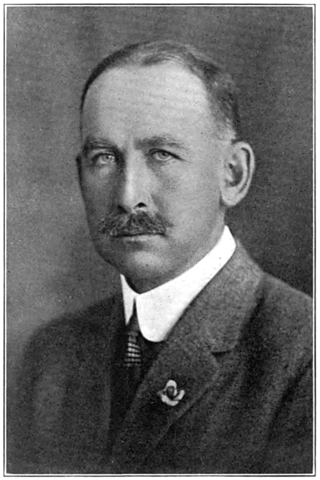
Sumner P. Hunt was an architect in Los Angeles from 1888 to the 1930s. On January 21, 1892, he married Mary Hancock Chapman, January 21, 1892. They had a daughter Louise Hunt.
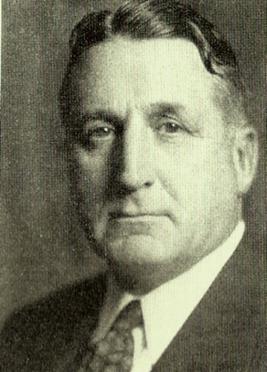
Gordon Bernie Kaufmann was an English-born American architect mostly known for his work on the Hoover Dam.
Gregory Samuel Ain was an American architect active in the mid-20th century. Working primarily in the Los Angeles area, Ain is best known for bringing elements of modern architecture to lower- and medium-cost housing. He addressed "the common architectural problems of common people".
Arthur Rolland Kelly (1878–1959) was an American architect, primarily in the Los Angeles, California area. Arthur designed approximately five hundred homes and other buildings.
Edwin Wallace Neff was an architect based in Southern California and was largely responsible for developing the region's distinct architectural style referred to as "California" style. Neff was a student of architect Ralph Adams Cram and drew heavily from the architectural styles of both Spain and the Mediterranean as a whole, gaining extensive recognition from the number of celebrity commissions, notably Pickfair, the mansion belonging originally to Mary Pickford and Douglas Fairbanks.

Myron Hubbard Hunt was an American architect whose numerous projects include many noted landmarks in Southern California and Evanston, Illinois. Hunt was elected a Fellow in the American Institute of Architects in 1908.
The Zane Grey Estate is a historic house in Altadena, California. It was listed on the National Register of Historic Places in 2002.

Frederick Louis Roehrig was an early 20th-century American architect. Roehrig was born in LeRoy, New York, the son of the noted "orientalist and philoligist," Frederick L.O. Roehrig. He graduated from Cornell University in 1883 and also studied architecture in England and France. His architectural styles evolved over time, covering the Victorian, American Craftsman, and Neo-Classical styles. Roehrig is particularly known for his many landmark buildings in Pasadena, California, including the Hotel Green, and Pasadena Heritage has occasionally conducted tours of Roehrig's buildings.
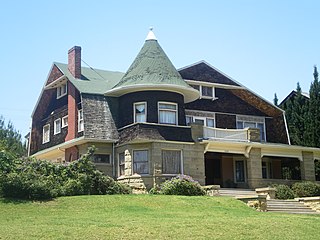
Alvarado Terrace Historic District is a designated historic district in the Pico-Union district of Los Angeles, California. It is located southwest of Downtown Los Angeles, along Alvarado Terrace between Pico Boulevard and Alvarado Street.
Holmby Hills is a neighborhood on the Westside of Los Angeles, California, United States.
Florence Theresa Yoch and Lucile Council were influential California landscape designers, practicing in the first half of the 20th century in Southern California.
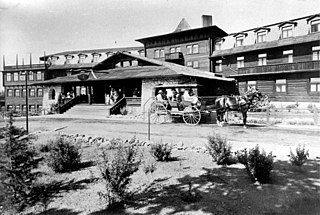
Charles Frederick Whittlesey (1867–1941) was an American architect best known for his work in the American southwest, and for pioneering work in reinforced concrete in California.

The Langham Huntington, Pasadena is a resort hotel located in Pasadena, California, that dates back to the Gilded Age.
Albert Raymond Walker (1881-1958) was an American architect. He is primarily known for his work with Percy A. Eisen as Walker & Eisen in Los Angeles.
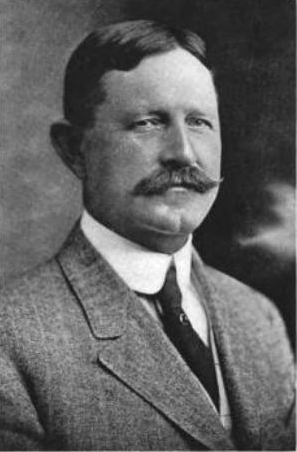
William George Kerckhoff (1856–1929) was an American businessman.
Roland Coate was an American architect. He designed many houses and buildings in California, three of which are listed on the National Register of Historic Places.
Silas Reese Burns (1855–1940) was an American architect.

Abraham Wesley Eager (1864–1930) was a Canadian-born American architect. He designed many houses in Los Angeles, California.






















